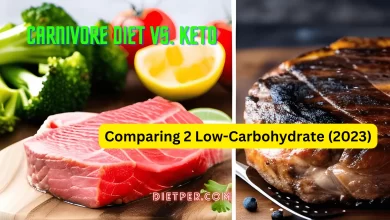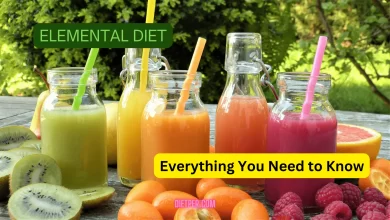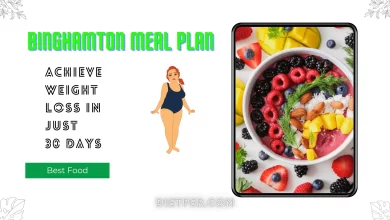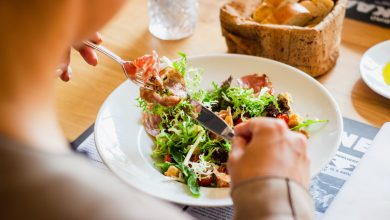The Vertical Diet: A Breakdown of Its Benefits and Drawbacks
Mastering the Vertical Diet: Benefits, Drawbacks, and Meal Plans
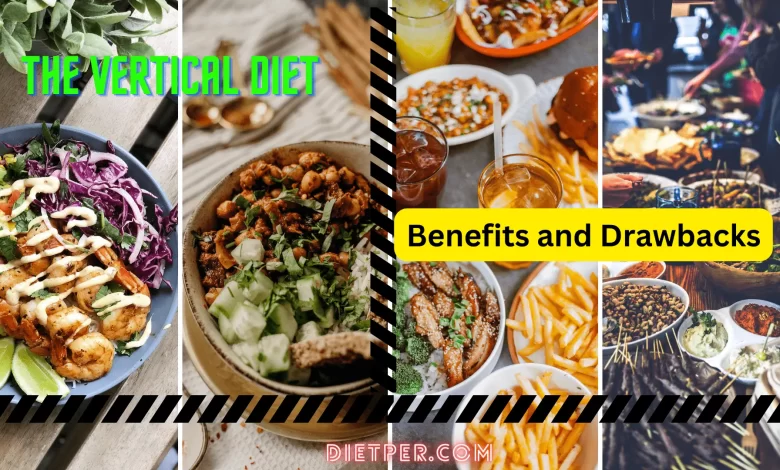
The Vertical Diet has been gaining popularity in the fitness world as a way to optimize performance and achieve better health. This diet was created by bodybuilder and powerlifter Stan Efferding, who claims that it can help with weight loss, muscle gain, and overall health improvements. The diet focuses on nutrient-dense, whole foods that are easy to digest and eliminate any potential digestive issues. While the Vertical Diet has its fans, some critics argue that it lacks variety and may not be suitable for everyone.
The Vertical Diet
The Vertical Diet has gained significant attention in the health and fitness community in recent years. Developed by renowned bodybuilder and powerlifter Stan Efferding, this dietary approach focuses on nutrient-dense foods to support optimal performance and overall well-being.
The Vertical Diet is based on the concept of simplicity and sustainability. It emphasizes consuming a combination of easily digestible foods that provide a wide array of essential nutrients. The diet primarily revolves around two main components: red meat and white rice. These two foods form the foundation of the Vertical Diet, providing a rich source of protein, iron, and other vital nutrients.
The vertical diet benefits
The Vertical Diet has gained significant attention in recent years for its touted benefits in terms of performance, health, and overall well-being. Here are some of the key advantages of following the Vertical Diet:
1. Improved Digestion: One of the main benefits of the Vertical Diet is its focus on easily digestible foods. By emphasizing high-quality protein sources and easily digestible carbohydrates, such as white rice and potatoes, the diet can help alleviate digestive issues like bloating, gas, and discomfort.
2. Enhanced Nutrient Absorption: The diet places a strong emphasis on nutrient-dense foods, including lean meats, fruits, vegetables, and whole grains. These foods are rich in essential vitamins, minerals, and antioxidants, which can support optimal nutrient absorption and promote overall health.
3. Increased Energy Levels: The Vertical Diet emphasizes the consumption of sufficient amounts of carbohydrates to provide sustained energy throughout the day. This can be particularly beneficial for athletes and individuals with high levels of physical activity, as it helps fuel performance and aids in recovery.
4. Improved Gut Health: The diet includes foods that promote a healthy gut microbiome, such as fermented foods like yogurt and sauerkraut. These foods contain probiotics that can support the growth of beneficial bacteria in the gut, leading to improved digestion, immune function, and overall gut health.
5. Simplified Meal Planning: The Vertical Diet promotes a simple approach to meal planning, focusing on a limited number of food choices that provide optimal nutrition. This can be advantageous for individuals who prefer a more structured and efficient approach to their diet.
Drawbacks of the Vertical Diet
Limited Food Variety
- The Vertical Diet primarily revolves around a few core foods like red meat, white rice, and eggs.
- Not suitable for individuals with specific dietary restrictions (e.g., vegetarians or vegans).
- Repetitive consumption can lead to taste fatigue and long-term adherence challenges.
Lack of Dietary Fiber
- Emphasizes low-fiber foods like white rice, potentially lacking sufficient fiber intake.
- Fiber is essential for digestive health, satiety, and disease risk reduction.
- It is important to incorporate fiber sources like fruits, vegetables, and whole grains.
Heavy Reliance on Animal Products
- High consumption of red meat, a prominent feature, may raise health concerns.
- Associated with increased risks of heart disease and certain cancers.
- Balancing red meat intake with other protein sources is crucial for a diverse nutrient profile.
Strict Nature
- Requires precise macronutrient calculations and portion control.
- It may be overwhelming and time-consuming for individuals not accustomed to structured eating plans.
- Consider personal lifestyle and ability to adhere to such rigidity before adopting the Vertical Diet.
Most Notable Articles of Dietper
- Delicious Low FODMAP Fast Food: Fruit, Nut, Snack, and Vegetable Recipes
- The Plant-Powered Path: Intermittent Fasting Vegan Meal Plan
- 16 8 Intermittent Fasting 7 Day Meal Plan For Health Support
Foods To Eat / Vertical diet food list / vertical diet shopping list
The Vertical Diet emphasizes nutrient-dense foods to support optimal performance and overall well-being. Here’s a list of foods commonly included in the Vertical Diet:
Proteins: Lean beef (especially red meat), Chicken breast, Turkey, Salmon, Eggs, Greek yogurt, Bison, Pork.
Carbohydrates: White rice, Sweet potatoes, White potatoes, Oats (in limited amounts), Fruits like oranges and berries (for some individuals), Carrots, Squash
Vegetables: Spinach, Broccoli, Asparagus, Bell peppers, Tomatoes, Green beans, Brussels sprouts
Fruits (in moderation): Oranges, Berries, Apples, Bananas (for some individuals), Pineapples (for some individuals)
Dairy (optional): Greek yogurt, Milk (for some individuals)
Fats (in moderation): Avocado, Olive oil, Coconut oil
Foods to Avoid
While the Vertical Diet focuses on nutrient-dense foods to optimize performance and well-being, certain foods are typically limited or avoided within this dietary approach. Foods to be cautious about or limit on the Vertical Diet may include:
Processed Sugars: Foods high in added sugars, such as sugary snacks, candies, and sugary beverages, are typically restricted.
Highly Processed Foods: Highly processed and heavily refined foods like fast food, packaged snacks, and sugary cereals are usually discouraged.
Trans Fats: Foods containing trans fats, often found in some fried foods and commercially baked goods, should be avoided.
High-Fructose Corn Syrup: Foods and beverages containing high-fructose corn syrup are generally minimized or eliminated.
Excessive Fiber: While fiber is essential, excessive amounts from whole grains and high-fiber foods may be limited for some individuals to avoid digestive discomfort.
Dairy (for some individuals): Some people following the Vertical Diet opt to limit dairy due to lactose intolerance or personal preferences.
Vertical diet recipes
Certainly! Here are a few simple Vertical Diet-inspired recipes to get you started:
Beef and Rice Bowl
Ingredients
- Lean ground beef
- White rice
- Spinach or broccoli
- Salt and pepper to taste
Instructions
- Cook lean ground beef in a skillet until browned, breaking it into crumbles.
- Cook white rice separately.
- Steam spinach or broccoli.
- Combine cooked beef, rice, and steamed vegetables in a bowl. Season with salt and pepper.
Chicken and Sweet Potato
Ingredients
- Chicken breast
- Sweet potatoes
- Asparagus
- Olive oil
- Seasonings (e.g., garlic powder, paprika, salt)
Instructions
- Season chicken breast with desired seasonings.
- Roast chicken in the oven until cooked through.
- Dice sweet potatoes into cubes, toss with olive oil and seasonings, and roast until tender.
- Steam asparagus.
- Serve the chicken with roasted sweet potatoes and steamed asparagus.
Salmon and Quinoa Salad
Ingredients
- Salmon fillet
- Quinoa
- Mixed greens (spinach, kale, arugula)
- Cherry tomatoes
- Cucumber
- Balsamic vinaigrette dressing
Instructions
- Grill or bake salmon until it flakes easily.
- Cook quinoa according to package instructions.
- Prepare a salad with mixed greens, cherry tomatoes, and cucumber.
- Top the salad with cooked quinoa and grilled salmon. Drizzle with balsamic vinaigrette.
Egg and Veggie Stir-Fry
Ingredients
- Eggs
- Bell peppers (various colors)
- Onions
- White rice
- Soy sauce or coconut aminos (for flavor)
Instructions
- Dice bell peppers and onions.
- Scramble eggs in a pan and set aside.
- Stir-fry bell peppers and onions until tender.
- Add cooked white rice and scrambled eggs to the pan.
- Season with soy sauce or coconut aminos.
Remember that these are just basic recipes, and you can customize them to suit your taste preferences and specific nutritional goals while following the principles of the Vertical Diet.
Vertical diet meal plan
A basic Vertical Diet meal plan might include the following:
Breakfast
- Scrambled eggs with spinach
- White rice
Lunch
- Grilled chicken breast
- Sweet potatoes
- Mixed Vegetables
Snack
- Greek yogurt with berries
Dinner
- Lean beef steak
- White rice
- Broccoli
Who can benefit from the Vertical Diet?
The Vertical Diet, gaining popularity recently, suits athletes and fitness enthusiasts due to its balanced macronutrient focus, aiding muscle growth and energy for workouts. Individuals with digestive issues benefit from easily digestible options, easing symptoms like IBS. It simplifies meal planning, reducing decision fatigue and time spent. However, it may not fit vegetarians/vegans or those with unique medical conditions, necessitating professional advice. Consider individual needs before adopting it.
How does the Vertical Diet work?
The Vertical Diet operates on the principle of simplicity and nutrient density to optimize both performance and overall health. At its core, this dietary approach focuses on a select group of highly nutritious foods. It includes lean sources of protein such as red meat, chicken, and salmon, alongside easily digestible carbohydrates like white rice and sweet potatoes. These foods form the foundation, providing essential macronutrients and supporting muscle growth, energy levels, and workout performance.
In addition to the primary components, the Vertical Diet incorporates a variety of fruits and vegetables to ensure a well-rounded intake of vitamins and minerals. By emphasizing nutrient-dense choices, it aims to improve digestion, increase energy, and enhance recovery. While the diet offers numerous benefits, it’s essential to recognize that individual variations and specific dietary needs can lead to personalized adaptations.
Frequently asked question
Is a vertical diet healthy?
The Vertical Diet can be healthy when properly balanced and tailored to individual needs, but its health depends on how well it aligns with a person’s specific dietary requirements and goals.
Why cranberry juice vertical diet?
Cranberry juice may be included in the Vertical Diet for its potential health benefits, such as providing antioxidants and urinary tract health support. However, its inclusion would depend on individual preferences and nutritional needs.
Why is it called the vertical diet?
The name “Vertical Diet” is attributed to its emphasis on vertical growth, aiming to optimize performance and overall health. It’s designed to help individuals reach their peak potential.
Who uses the vertical diet?
The Vertical Diet is commonly used by athletes, bodybuilders, and fitness enthusiasts who seek to enhance their performance, improve digestion, and simplify their nutrition plans.
Is a vertical diet healthy?
The healthiness of the Vertical Diet depends on how well it’s balanced and aligned with an individual’s specific nutritional needs and goals.
Final thoughts
The Vertical Diet can be a viable option for those seeking a structured approach to nutrition that emphasizes whole foods and performance optimization. However, it may not be suitable for everyone, and individual preferences, dietary restrictions, and overall health goals should be taken into consideration before adopting this eating plan.
Disclaimer
This blog post aims to empower you to make informed and health-conscious food choices. Your well-being is of paramount importance, and it’s essential to prioritize your health before embarking on any restrictive diets. Therefore, if you have any concerns, it is highly advisable to seek guidance from a healthcare professional or registered dietitian before making dietary changes.

